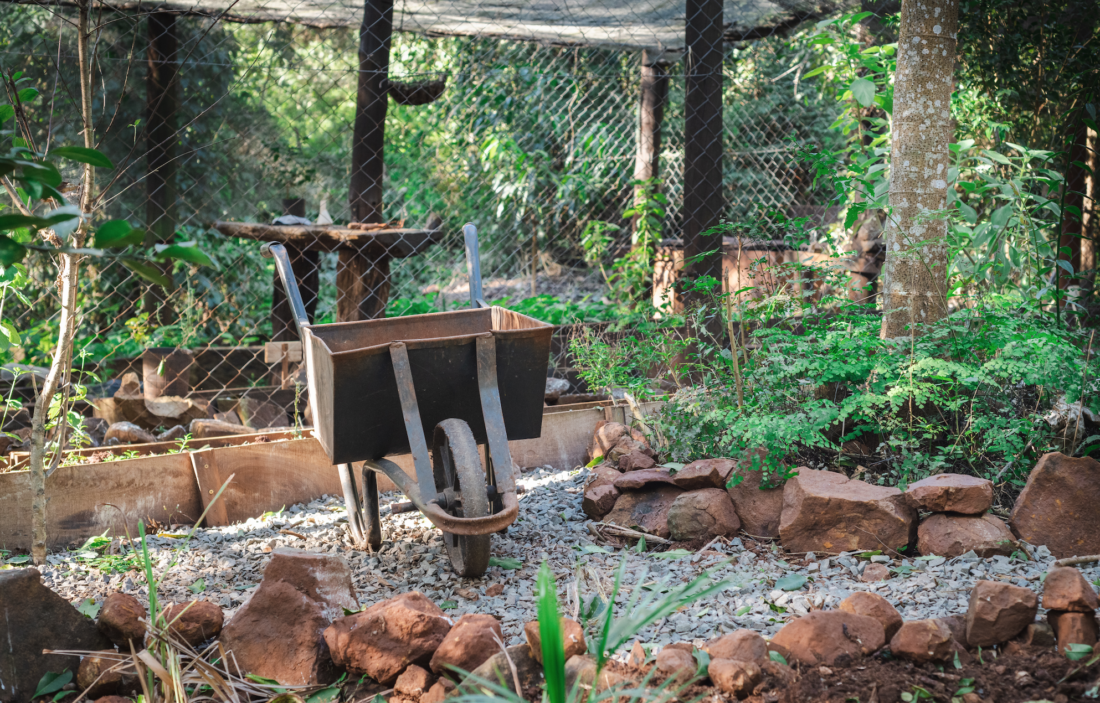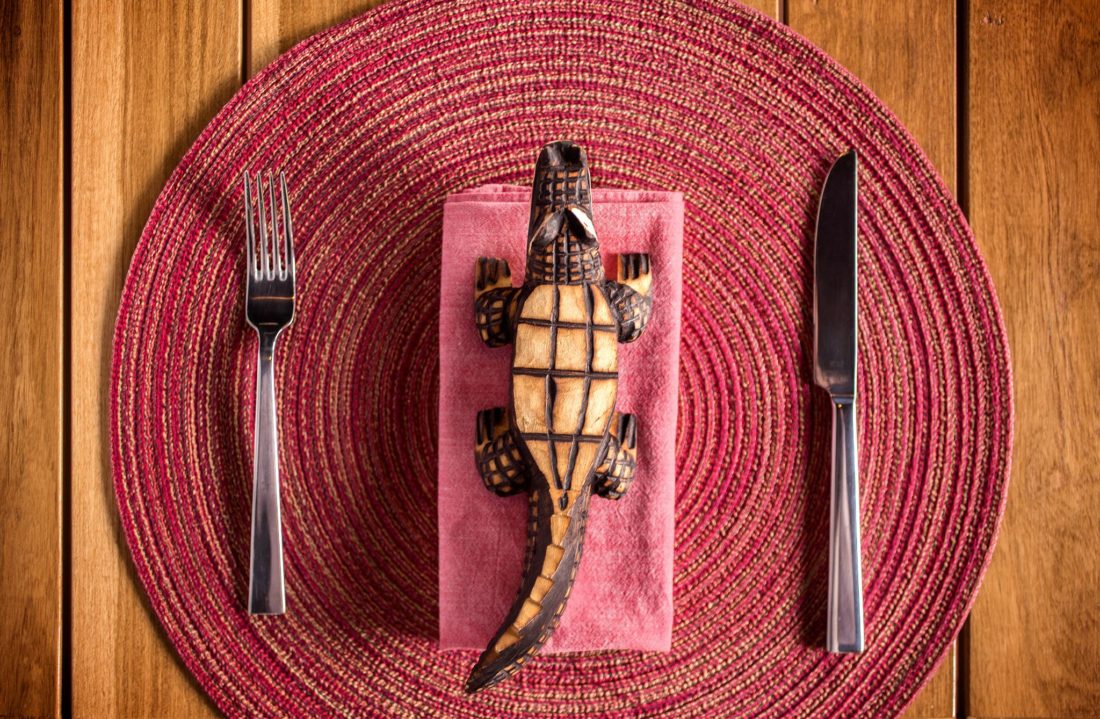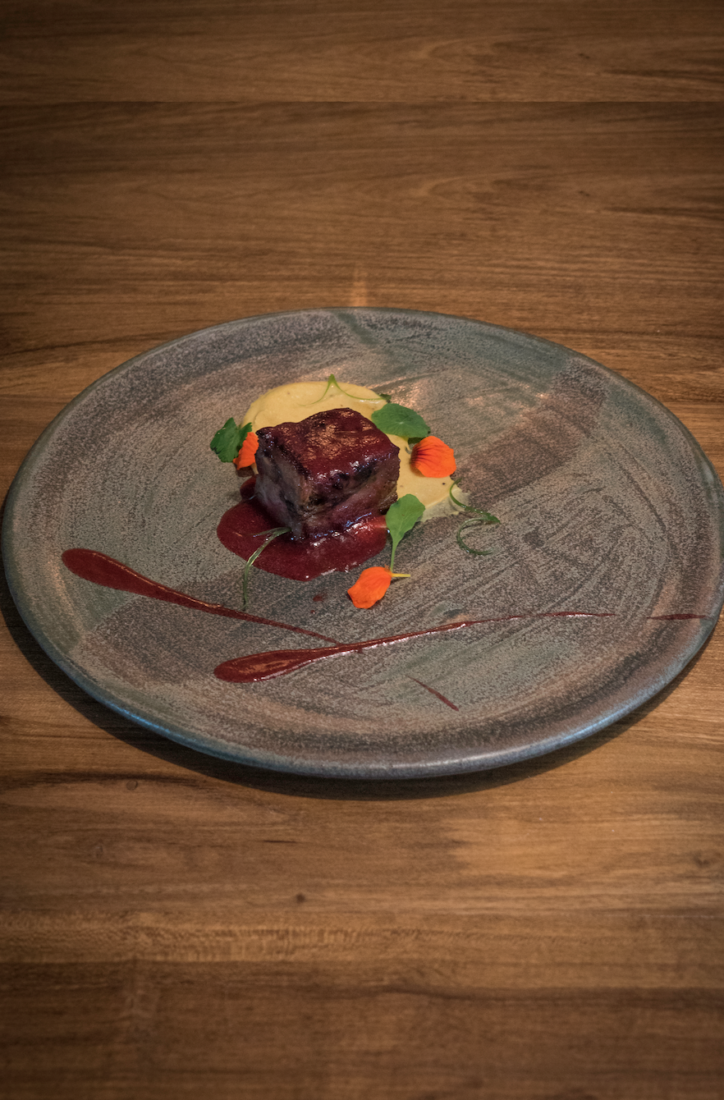“The cuisine at Awasi Iguazu is not only tasty, colourful, fresh and nutritious, it is above all a tribute to the local culture,” says Paula Bertotto, Operations Manager at Awasi Iguazú. “It is as rich and varied as the ethnic groups that coexist in the Province of Misiones, always showing the particular ingredients, techniques and stories behind each dish.”

A member of the local Guarani community demonstration weaving techniques at Awasi Iguazu
Our Chef Manuel Agrelo loves to adapt the indigenous Guarani cuisine, whilst incorporating dishes brought to Argentina by European immigrants and adapted to the ingredients provided by these lands.
“Regional cuisine unites these two great influences in each dish,” says Paula. “The local and the introduced.”

So, what is local? Cassava, beans, corn, yerba mate, forest fruits, fish.
And what was introduced? Mainly milk, cheese, chicken eggs and wheat flour, because cows, hens and wheat were brought over by the first Europeans.
“When in Argentina, you might expect to eat beef,” says Paula, “and of course we serve beef at Awasi, but in Iguazu we also have a huge amount of river fish and local vegetables that grow in abundance in and around the hotel, including in our organic kitchen garden.”

The organic vegetable garden at Awasi Iguazu
Why eat French fries when you can eat fried cassava?
“This tuber is the most basic part of our diet. Missions is the land of small family farmers and with absolute certainty we can say that they all grow manioc. It is the daily bread served in all houses. When cassava is not prepared boiled or fried, its starch is consumed in preparations such as “chipas”, rolls that also incorporate milk, egg and cheese and are offered by street vendors in every corner of the village.”

Paula Bertotto – Awasi Iguazu
“We can’t go without mentioning a local specialty Pollo – chipa guazu”, says Paula “because it is the aroma that perfumes the streets of Iguazu on Sundays at noon. The neighbors cook, on the same sidewalks, grilleed chicken, accompanied by “chipa guazu” and all Iguazu should have lunch the same on Sundays!”
“Table by table, our chef walks through the stands,” says Paula, “buying vegetables harvested just a few hours ago; homemade pickles, cheeses and sausages made with the knowledge of their ancestors.”

Place settings are wooden carvings of local fauna created by artisans from the area
Desserts deserve a separate chapter
“Fruits of the forest are much loved by the locals,” says Paula, “such as the yacaratia -relative of the papaya- and have come to the Awasi Iguazu kitchen in the form of syrups, mousses, ice cream or sorbets.”
The chef’s adaptation of rustic dishes to dishes from a Relais & Chateaux table is extraordinary. And even more valuable is their respect for the hard and loving work of farmers.
Proudly, and rightly, Manu says: “Everything on this dish comes from less than 50km to the hotel’s doorstep.”

Awasi Iguazu, our 14 room Relais & Chateaux lodge in Northern Argentina, is one of the three Awasi lodges. At each of our hotels, the design, style and cuisine is different and inspired by its individual location. Each stay at Awasi is tailor made, so guests with a particular interest in gastronomy can follow a foodie route.

